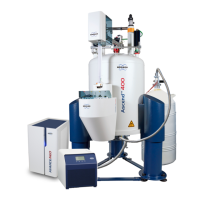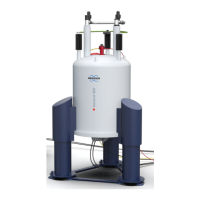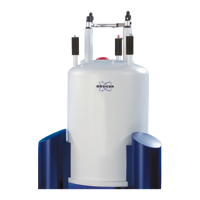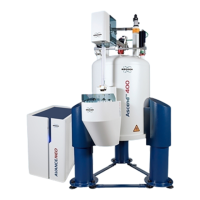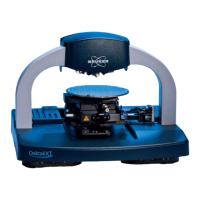General Remarks
DOC-M88-EXX268_V1_12.2016 21
2.2.2 Temperature Calibration
The temperature sensor used for controlling can indicate a wrong value for the sample,
because the position of the sensor differs from the sample position. Another reason is the
reduced contact of the sample and the sample holder. These effects are increasing for ex-
treme temperatures. In some cases, an additional temperature sensor is provided to mea-
sure the sample temperature. The best way to eliminate errors during temperature depen-
dent work is to determine the temperature by standards (temperature calibration). This
can be done either for the standard alone (determination of the offset between the control
temperature and the temperature calculated from the calibration standard for a set of tem-
peratures) or by mixing a small amount of standard sample, if possible, to the specimen
under investigation.
We recommend MgO (Periclase, PDF 45-0946) for temperatures above ambient tempera-
tures up to 1000°C. At higher temperatures, sintering cannot be excluded.
Above 1000°C, sintering of MgO cannot be excluded
Another possibility is to use substances with a structural phase transition at defined tem-
peratures or melting points of metals, see Table Some Samples with structural phase tran-
sitions useful for temperature calibration [}24]. Beware of hysteresis effects!
2.2.2.1 Temperature Calibration by Thermal Expansion of MgO (Periclase)
A melting point of 2642°C and a thermal expansion coefficient α=10.2× 10
-6
°C
-1
en-
ables MgO to be a calibration standard.
In most cases it behaves inert against other substances. In this cubic sample with NaCl-
Structure, only ten reflections (Table below) are observed by diffraction with CuK
α
-radia-
tion. The positions of reflections, especially at high angles are used to determine the tem-
perature. The samples should be treated in a standard way (milled with Isopropanol in a
mortar) to exclude the influence of aging, reception of water or other effects. Small
amounts of Mg(OH)
2
would not disturb the temperature calibration.

